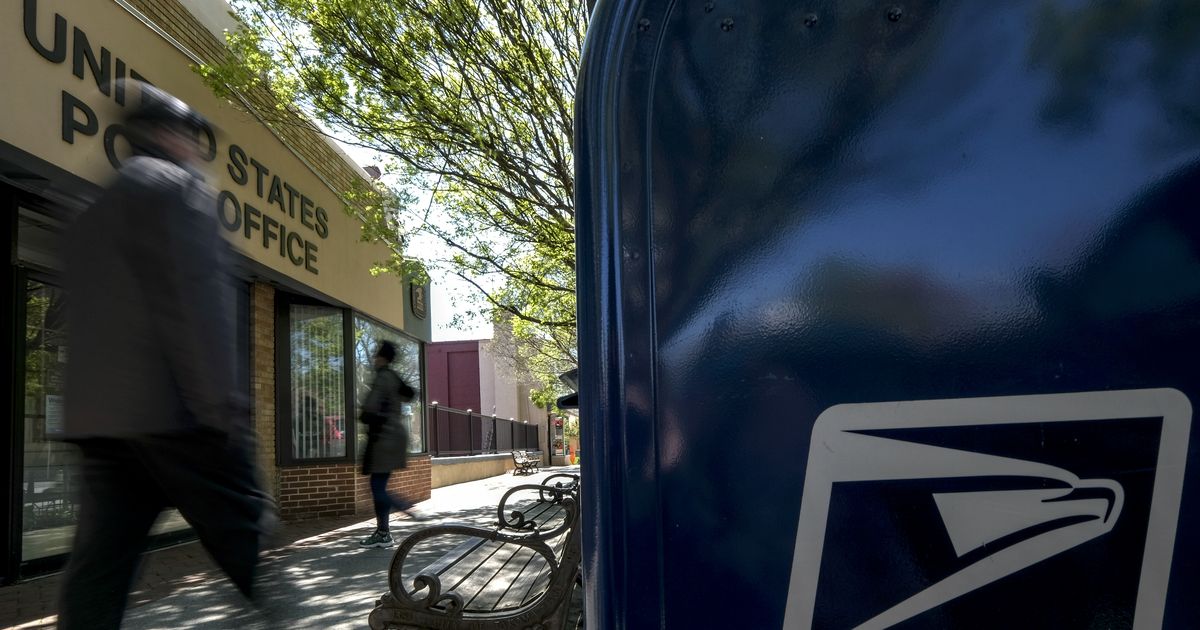Top U.S. Postal Service officials are considering allowing slower long-distance and rural mail delivery in the coming months to cut costs for the cash-strapped agency – but not until after the election.
The changes would provide faster delivery service to customers within 50 miles of the Postal Service’s largest processing facilities, where the vast majority of letters and packages arrive, Postmaster General Louis DeJoy told The Washington Post. But the agency cannot afford to keep the same model for deliveries to far-flung areas, he said. That could add a day to current delivery times.
“At the end of the day, I think some of the mail is arriving 12 hours late. I think that’s the price we’ve had to pay for neglecting this place,” DeJoy said. “If you look around in any other country, delivery takes longer and is much more expensive. We’re trying to save the Postal Service — not figuratively, not to advocate for something. We’re trying to save the Postal Service literally.”
DeJoy said the new policy would not be implemented until after the November election. The Postal Service on Thursday submitted plans to its regulator to hold public hearings to gather feedback on the proposed changes.
Four years ago, similar cost-cutting measures led to litigation over concerns that they could cause voting disruptions. Ultimately, the agency helped nearly half of all voters request or cast ballots by mail in 2020, according to the University of Florida’s U.S. Elections Project.
Under the plans being discussed, the Postal Service would allow letters and packages to sit at certain facilities for an extra day rather than transporting them immediately for processing and delivery, DeJoy said. That would extend acceptable delivery times for mail over longer distances.
Pilot projects on this policy have been running for months in certain, predominantly rural areas.
The new delivery standards require approval by the agency’s nine-member board of directors. They must also be reviewed by the Postal Regulatory Commission, but the panel’s recommendation is not binding.
The Postal Service is still reeling from the effects of mail delivery delays related to the 2020 election. In an effort to cut costs and improve operations, initiatives led by DeJoy have impacted mail delivery across the country. Experts say the changes have jeopardized access to the polls for tens of millions of Americans.
The Postal Service faced numerous lawsuits over its 2020 policies and ultimately took “extraordinary measures” that resulted in nearly 98% of ballots being delivered from voters to election officials within three days. Since then, the agency has generally received praise for its handling of ballots in numerous elections.
“The Postal Service really goes to extraordinary lengths, especially as we get closer to Election Day, to make sure that every voter who mailed their ballot in time gets it delivered so it can be counted and their voice can be heard,” said Tammy Patrick, chair of the National Association of Election Officials. “However, when we push ballot returns or mail volumes into the final days, the Postal Service is under more pressure to deliver not just within their delivery standards, but (faster than) their delivery standards.”
The Postal Service has struggled to meet those standards in recent months. According to postal data firm SnailWorks, the agency delivered 83.4 percent of first-class mail on time during the week of Aug. 12. The agency’s goal is 95 percent on-time delivery.
However, according to the agency’s online data dashboard, the Postal Service is exceeding its 95% target for delivering one-day grace mail nationwide.
The agency’s delivery rates could improve, experts say, if it allowed slightly slower service in rural areas, which often leads to lower on-time rates.
DeJoy and the board have already relaxed the Postal Service’s goals in recent years. By 2021, the agency aimed to deliver all first-class mail in three days or less. DeJoy extended that deadline to up to five days in 2021 as part of his 10-year cost-cutting plan. The agency has also raised the price of first-class postage by 33% over the past four years.
“Any attempt to degrade service while raising prices is a recipe for a death spiral at the Postal Service,” Rep. Gerry Connolly (D-Va.), a leading DeJoy critic, said in a statement. “This is the second time Postmaster General DeJoy has proposed lower service standards. He might as well announce a return to horse-drawn carriage mail delivery.”
The Republican-controlled House Budget Committee also rejected parts of DeJoy’s ten-year plan, writing that it was “deeply concerned about the potential negative impacts on the Postal Service for the American people, customer satisfaction, and cost overruns.”
In an interview, DeJoy responded that politicians were “overwhelmed” with their criticism of the agency.
“They don’t understand the business. Nobody knows what it takes to compete with FedEx and UPS, and that’s driving billions of dollars in costs out of the criticism business. Even if Congress does, they don’t know,” DeJoy said.
The pricing and delivery changes have done little to stabilize the Postal Service’s finances. The agency is expected to lose more than $7 billion in fiscal 2024, up from $6.5 billion in fiscal 2023. In 2022, Congress passed a $107 billion plan to stabilize the Postal Service’s balance sheet after fears arose during the pandemic that it might not survive another financial shock.
The agency’s “universal service obligation” – its commitment to deliver low-margin products to rural areas, even if it means financial loss – is a key reason for its financial difficulties. Private sector competitors such as FedEx, UPS and Amazon often exploit this mandatory service to avoid deliveries to unprofitable locations. (Amazon founder Jeff Bezos owns the Washington Post.)
For packages, this practice makes money for the postal service, but it still burdens it with the least profitable routes while its competitors expand their distribution network in the most attractive areas. As mail delivery slows, some stakeholders fear this could take customers away from the postal service.
– – –
Graphic:
https://washingtonpost.com/documents/f6f59857-4081-4abd-a842-7aa3338a3d1d.pdf
https://washingtonpost.com/documents/839dbea9-2fb9-4dd8-85ef-41f7684b5030.pdf

